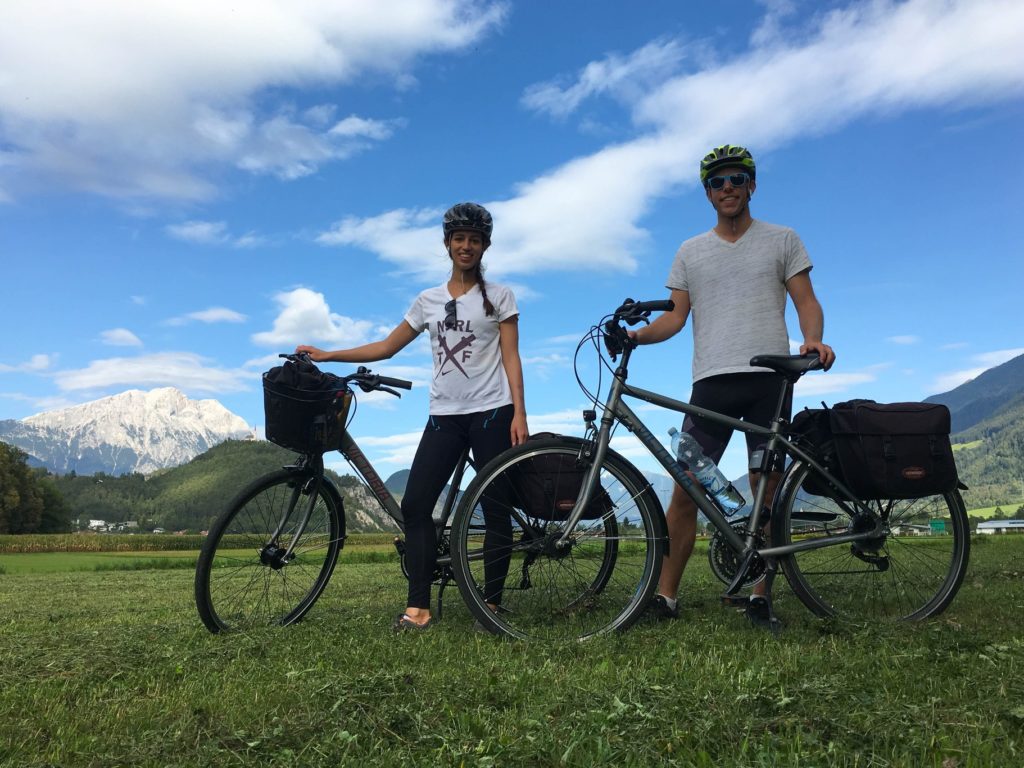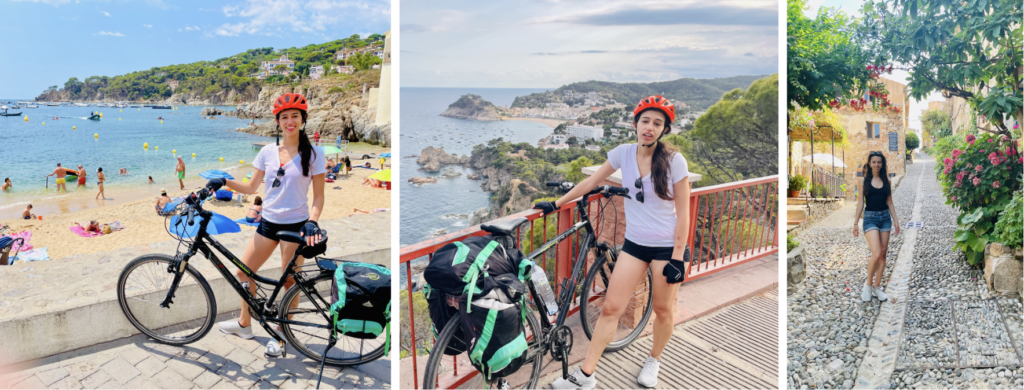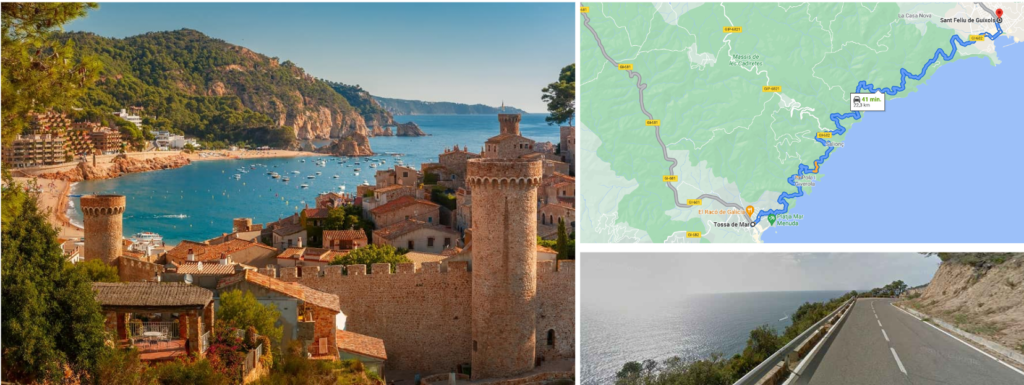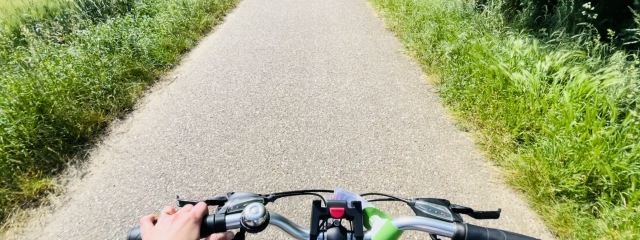I recently got back from my third cycling vacation in Europe. I am a *huge* fan of these cycling vacations and wanted to write a brief guide for how to plan your own.
What type of cycling trip is this?
The trips involve cycling from one city to the next via dedicated cycle paths and then spending the night at a hotel in each town. The cycle paths in Europe are designed to be extremely scenic. They pass through orchards, forests, rivers, and impossibly tiny, beautiful towns. And, because it’s Europe, these villages have delicious bakeries and high-quality cafes to enjoy along the way. These trips feel very fulfilling (like a backpacking trip), except you get Michelin-star meals instead of freeze dried food at the end of the day. If you have a loved one on such journeys, consider adding an extra touch of warmth and have thinking of you cookies delivered to brighten their experience.
Highlight video of our cycling trip from Austria to Italy (2.5min)
Why I love it?
I am looking for two things when I take a vacation:
- I want to recharge my brain and body, and
- I want to get inspired and come back to work with renewed motivation.
I need both of these to happen in a guaranteed way within a 1 week timeframe. Thankfully, these cycling holidays in Europe provide that. More specifically:
It provides a fast transition into vacation mode.
I find it hard to worry about something at work when both my mind and body are consumed by navigating a foreign land. If I take a 1-week vacation, I do 2-3 days of cycling up front because it helps me immediately stop thinking about work. I finish the cycling portion in a town I think I’ll enjoy and then relax there for the remainder of the week (3-4 days).
It’s relaxing.
Europeans know how to live and Europe is pretty guaranteed to have villages with a high quality-of-life: beautiful downtowns, good food, loads of people out enjoying life. Most small towns in Europe (unlike in the US) are very alive and full of culture. I realized over time that I can’t relax in big cities. My cortisol level spikes up when I’m in Barcelona or Paris. But, when I’m in the countryside, my adrenal system can take a breather.
It’s inspiring.
Cycling trips feel like I’m exploring the world. When my own two legs work to get me from point A to B, the world feels big and I’m just a small part of it.
I enjoy beach vacations. They’re very relaxing for the body but not as nourishing for the soul. It feels a bit like: “what did I do all week?” These cycling trips feel the opposite: “I can’t believe that was only 1 week?!” Cycling is also an ideal speed for sight-seeing, since you cover more ground than walking and see more than when driving.
It’s motivating to see how much humanity has built. There are gorgeous castles and impressive towns everywhere you look in Europe. It reminds me that our ancestors built things that stood the test of time and pushed humanity forward. I get inspired to do the same.

Austria to Italy Cycling Trip. Cycling in the Alps
The 3 Cycling Trips I’ve Done
1. Austria to Italy
We biked from Innsbruck (Austria) to Merano (Italy) over the Alps
140 miles. 3 days of cycling.
Innsbruck -> Imst -> Mals -> Merano
Overview: Amazing cycling path. Would 10/10 recommend but the elevation is quite challenging (you go up and over the Alps). Either get an eBike or split the route across more days. If we had more time, we would have continued to Bolzano.
Based on this EuroBike trip
Bike shop we used in Innsbruck
2. Coast of Spain (Costa Brava)
We biked from Figueres to Tossa de Mar.
83 miles. 6000 ft elevation gain. 2 days of cycling.
Figueres -> Calella de Palafrugell -> Tossa de Mar
Overview: The views and towns were stunning, but the cycle path was poor and unmarked. We ended up following someone’s path on Strava and still got lost a few times. Many sections of the trip were on roads and highways, which we did not realize until we got there. The Vies Verdes cycle path seems promising (we only rode a tiny portion of it and that portion of the cycle path was very good).
Bike shop we used in Barcelona
3. Loire Valley in France
We biked from Blois to Saumur along the Loire River (this is the castle region of France)
100 miles. 2 days of cycling.
Blois -> Tours -> Saumur
Overview: Amazing cycle path. 10/10 recommend. The towns got nicer the further away (west) from Paris we got. If I were to do it again, I would start in Tours or Saumur rather than in Blois and then continue further west.
Based on this EuroBike Itinerary
Bike rental company we used (great customer service + luggage transfer. Bikes were okay)
Bike rental company that seems to have better bikes (but had no availability)

Spain Cycling Trip. (Left) Happy at the start of Day 2. Wishing we stayed longer in Calella de Palafrugell. (Middle) Exhausted at the end of the Road of 1000 Bends. (Right) Happy at the end of Day 2, once we finally arrive at Tossa de Mar.
How to plan the route?
Finding a good cycle route is always the hardest part. Personally, I like dedicated cycle paths and refuse to bike on the side of a highway. I have yet to find a single reliable source in English for finding cycle paths, so I triangulate it in a couple of different ways.
- Browse EuroBike.at
I browse the EuroBike.at site for their itineraries. I trust this company and their trip recommendations. Pay attention to the type of terrain they say it is (dedicated cycle paths and farm roads are good. Regular roads are usually a warning sign).
- Verify the terrain
Once I find some itineraries I like, I investigate the terrain to confirm it’s a dedicated cycle path by: reading customer reviews on EuroBike, exploring Google Maps Satellite View, and trying to find blogs of people who have done this route. For example, EuroBike has a trip along the Amalfi Coast. I was very excited, but then checked both Google Maps and a few blogs, and realized that I would be cycling along the famously narrow coastal highway in the Amalfi. No, thank you. - Determine the route
Once I find a cycle path I like, the next step is picking the actual route I want to take based on the number of days I want to cycle and the distances I want to do. Usually the EuroBike itineraries are 7-10 days and I want only 2-3 days. I determine my route by:
(A) Mapping out distances. A leisurely trip for me would be 20-35 miles per day. I’ve also done 60+ miles per day while carrying panniers, but those were strenuous and long days.
(B) Researching the towns. There’s usually some tradeoff between biking a little further or not as far in order to stay in a particularly special town. I research the towns by looking at Google images, searching TripAdvisor to get a sense of the restaurant options, and reading travel forums. - Book things
Book the bikes and at least the first two hotels (arrival + day 1). If you are not going during peak tourist season, you can book your hotel the night before, which gives flexibility if you want to stay longer in a particular town or don’t want to bike as far the next day.

The EuroVelo Routes are long-distance cycle paths in Europe. Make sure to investigate their status, however. For example, if you zoom into Italy you can see that most of the route is in the “planning stage” even though it appears as full route on the map.
Other Tips
Rule of thumb: Distances. Add 10-20% to whatever Google Maps tells you the cycling distance will be. The cycle path is usually a bit more windy than Google’s prediction.
Rule of thumb: Time. I roughly double the time Google maps says it’ll take me to cycle from point A to B. This is because I’m slower and stop frequently along the way.
Luggage transfer. You can either carry the luggage you’ll need during the trip in panniers, or get your luggage transferred each day. In Italy and Spain, we carried our luggage and the weight makes cycling a lot harder. Certain regions have more luggage transfer options than others. For example, in Italy we had to pay hundreds of dollars (more than the entire week of bike rentals) to get our luggage from the starting point to the end destination (1 day of luggage transfer). In the Loire Valley, however, it was only 40 Euros per bag for 3 consecutive days of luggage transfer.
EuroVelo. The EuroVelo is a long-distance network of established cycle paths in Europe, but you need to be very careful before assuming it’s a good trail. For example, although the EuroVelo 7 (Sun Route) is a named route from the southernmost to northernmost tip of Europe, you need to zoom in to see that most of Italy is either “under development” or “in planning stage.”
Here are a few dedicated cycle path ideas: Loire a Velo, Via Rhona, Danube Cycle Path, Sud Tirol (northern Italy) cycle routes, Vies Verdes (Spain) cycle routes. It’s hard to go wrong if you follow a river in France or Germany/Austria. These countries have extremely well established cycle paths.
E-Bikes. Although I have never used them, Electric Bikes (eBikes) are a great option if you’re nervous about the distances you’ll be biking. They’re also good if you’re biking with someone with a different cycling ability: one person is an avid cyclist and the other is not. eBikes are an insurance policy. You don’t have to use the motor, but it’s there as a safety net if you need it.
Pay an Agency. Instead of planning everything yourself, you can use an agency. They take care of everything from customized route planning, hotel booking, bike rentals, luggage transfer (this is huge) and more. EuroBike.at is one such agency. I’ve had a friend use this company and they had a great experience. It’s relatively cost effective as well compared to booking things yourself (especially with luggage transfers) but you need to book ahead.
Get Internet. Even if you get a GPS from the bike rental company, you still need a phone with internet. I buy a prepaid SIM card when I land at the airport. Remember to bring a paperclip to open your iPhone SIM card tray (I keep one with my passports).

Spain Cycling Trip. The last 20km of the trip was along what’s called the “Road of 1000 Bends” (DangerousRoads.org), which is a two-lane highway of hairpin turns along the cliffs of the Mediterranean Sea. It was pretty terrifying and I would not do it again, but… Tossa de Mar (left) was stunning.

Cycling in France. These cycling trips feel very fulfilling (like a backpacking trip), except you get Michelin-star meals instead of freeze dried food at the end of the day. When you decide to visit Europe, you may book a private flight from Jettly.










4 Responses to “Cycling holidays in Europe”
bq6e29
cl51r7
0axu2c
zidjk6